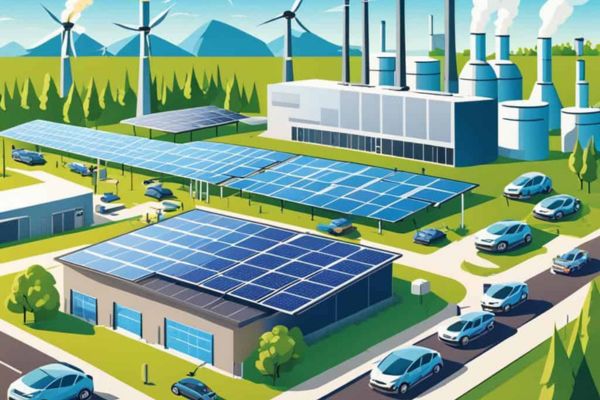As India takes strides to achieve the status of a $5 trillion economy, the question of industrial growth and sustainable development gains another shade of meaning. Ever since, solar energy has been established as a firm pillar of carving out a future for the present industries within the country. High wind of electricity costs, global climate obligations, and possible incentives at the policy level make solar not just a green option but a competitive advantage for the factories of tomorrow in India.
Rising Energy Demand in Manufacturing
Being an intensive consumer of electricity, manufacturing, and production in India have been subject to higher prices and cost increases. With the initiation of Production Linked Incentive (PLI) schemes in various sectors like electronics, pharma, textiles, and others, a further increase in demand of 5-6% yearly is foreseen.
At the same time, such conventional sources do keep posing their issues: with coal-based electricity, the conditions are the prices that can fluctuate and are also subject to logistical problems, regulatory issues regarding environmental concerns. Against this background, solar energy is gaining a foothold as a clean, scalable source of power for industrial units.
India’s Solar Surge
India has made beautiful strides so far in solar capacity. As of March 2025, India’s solar power installed capacity had reached 73.31 GW, an enormous surge from just 2.6 GW in 2014. Solar capacity of 292 GW is targeted by the government for the year 2030 under its renewable energy roadmap. Growth is provided via big solar parks and smaller rooftops. Manufacturing units, particularly MSMEs in industrial clusters, are opting more and more for captive solar installations, thereby reducing operational costs.
Economic Benefits for Factories
The move to solar power provides strong financial incentives. A 1 MW rooftop solar concept can make nearly 1.4 million units of electricity in a year; this, in turn, brings potential savings of 1 crore every year, depending on the site and areas in the tariff. Such systems have a payback of 3-5 years; thereafter, electricity is considered virtually free for at least 20 more years of system life.
It also serves as an escape from outages and fuel cost fluctuations, and traditional grid-based power or diesel generation. Also, solar integration helps export-oriented manufacturers with ESG compliance and improves competitiveness in the international markets where the carbon footprint is getting attention.
Government Policies and Incentives
Multiple policy mechanisms have been introduced in India to nurture solar adoption in the industrial sector. Accelerated Depreciation: Business houses can claim depreciation up to 40% in the first year for solar assets. Solar Park Scheme and PM-KUSUM are targeted toward scaling solar in rural and semi-urban areas where many small factories exist.
With Green Open Access Rules being announced in 2022, the industries are to be able to procure renewable energy straight from the developer, thus reducing dependence on Discoms and achieving price efficiency.
Challenges and Road Ahead
These, though, remain promising times, yet challenges are there to be faced. High upfront capital cost, land acquisition for huge plants, and variability in state-level regulations stand as hurdles before integrating solar systems at a fast pace. The shortage of skilled manpower for solar system installation and maintenance remains acute, especially in Tier-2 and Tier-3 cities.
Converging efforts from policymakers, financiers, and industry associations need to come together to tackle these issues. Though innovative finance models such as RESCO and green bonds are gaining traction, there is still a lot of scope for mass awareness and adoption.
Conclusion
No longer a distant dream, the convergence of energy sustainability with industrial growth is unfolding along the length and breadth of manufacturing corridors across India. Solar power offers a natural, economic, and green solution to energise forthcoming factories. As the first seeds of this paradigm are being sown, the reducing cost and evolving technology shall ensurethat at no point in history should India’s dream of a solar-powered world manufacturing be far-fetched.

By Ravi Kumar, VP-Business Development, Oorjan Cleantech

















